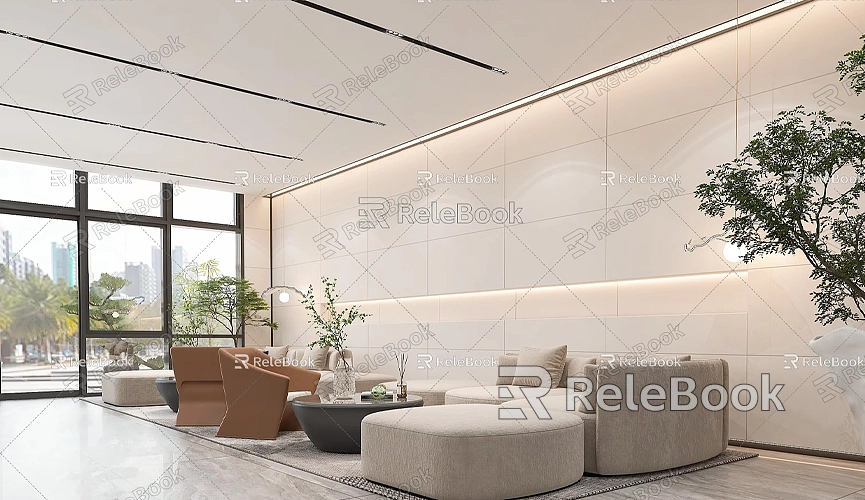How to Decrease the Size of a SketchUp Model
When using SketchUp for 3D modeling, large file sizes can lead to slow performance and even crashes, especially when models contain many details and components. If you need to share your model, upload it to a website, or prepare it for 3D printing, reducing file size becomes crucial. This article will introduce several methods and tips for minimizing SketchUp model sizes, helping you optimize your files and improve workflow efficiency.
Why Reduce Model File Size?
Complex models in SketchUp can consume significant memory and disk space, especially when they contain many polygons, materials, and components. This can affect software responsiveness and cause issues during file transfer and loading. By effectively reducing file size, you can enhance SketchUp’s performance and make it easier to share files with others.

Clean Up Unused Components and Materials
SketchUp model files often include unused components, materials, and entities, which take up valuable storage space. Therefore, cleaning these unused elements is the first step in reducing file size.
In SketchUp, you can go to the "Window" menu and select "Model Info," then click on the "Statistics" tab and hit "Purge Unused." This will automatically remove unreferenced components, materials, and entities from your model. This feature is handy and can significantly reduce file size with just a simple click.
Simplify Geometry in the Model
If your model contains many intricate details, such as curves and complex polygons, this can increase file size. One solution is to simplify the model's geometry.
In SketchUp, you can manually delete unnecessary details or use the "Simplify Tool" plugin to optimize polygon counts. For objects viewed from a distance, reducing detail won’t significantly impact the final appearance but can substantially decrease file size.
Additionally, using the "Edge Style" tool allows you to simplify line displays by hiding edges and guide lines. By reducing the number of lines visible in the view, you can effectively lower the model's complexity.
Use Components and Groups Wisely
When your model contains repeating elements, such as furniture or architectural details, it’s best to create these as components rather than individual objects. Components not only reduce file size but also allow for easier bulk modifications. For example, if you have ten identical chairs in an office model, using components instead of duplicating individual objects will significantly lower the file size.

Similarly, effectively using groups can also decrease file size. Grouping related parts of the model keeps it tidier and optimizes performance by reducing duplicate objects.
Reduce and Optimize Material Textures
Material textures are another significant factor in large SketchUp files. High-resolution textures can take up a lot of space. If your model uses many materials, especially high-quality textures, consider lowering their resolutions.
In SketchUp, you can manage all materials through the "Materials" panel. Select high-resolution materials and adjust their resolutions. Generally, textures at 1024x1024 or lower meet most display needs, and for objects not viewed up close, you can compress to 512x512 or even lower.
If you need high-quality 3D textures and HDRI for your models and virtual scenes, you can download them for free from [Relebook Texture Library](https://textures.relebook.com/). For exquisite 3D models, visit [Relebook Model Library](https://3dmodels.relebook.com/) for a variety of quality resources.
Use External Plugins for File Optimization
In addition to the built-in tools and features in SketchUp, there are many external plugins available to help optimize your models. Some plugins can automatically detect redundant geometry, clean up unused materials, and merge identical components, making it more efficient to reduce model file size.
Here are some useful plugin recommendations:
- CleanUp3: Cleans up unused elements in SketchUp models, removes hidden geometry, and optimizes model structure, making it ideal for reducing file size.
- PolyReduce: If your model has many complex surfaces, this plugin helps reduce the number of polygons, significantly decreasing file size.
- Skimp: Designed for high-polygon models, it quickly reduces details in complex models while maintaining overall appearance.
Split the Model into Multiple Files
If, after applying the above methods, the model size is still larger than expected, consider splitting a large model into multiple smaller files. This not only reduces the size of each file but also makes project management and modifications easier. You can save each part of the model as a separate SketchUp file and then import these smaller files into a master model using the "Attach Model" feature.
This method is particularly common in large architectural and urban planning projects, allowing team members to work independently without impacting the entire project.
By employing these strategies, you can effectively reduce the file size of SketchUp models. Whether it’s cleaning up unused components and materials, simplifying geometry, wisely using components, or leveraging external plugins for optimization, all these actions help lower file volume and improve efficiency. This is especially important when you need to transfer, share, or prepare files for 3D printing, as file size directly affects convenience.
If you're looking to enhance the details and quality of your 3D models, utilizing high-quality resources is also crucial. For high-quality 3D textures and HDRI, visit [Relebook Texture Library](https://textures.relebook.com/) for free downloads, and for beautiful 3D models, check out [Relebook Model Library](https://3dmodels.relebook.com/) for a wealth of premium resources.
I hope this article helps you learn how to optimize your SketchUp models and reduce file sizes, making your modeling experience smoother and more enjoyable.

